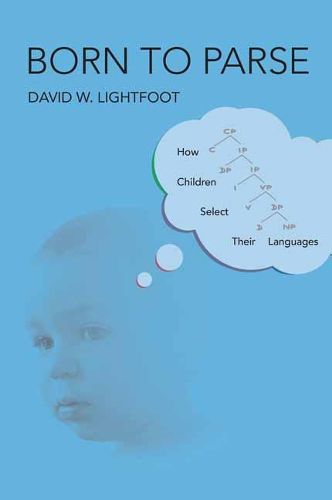Readings Newsletter
Become a Readings Member to make your shopping experience even easier.
Sign in or sign up for free!
You’re not far away from qualifying for FREE standard shipping within Australia
You’ve qualified for FREE standard shipping within Australia
The cart is loading…






An argument that children are born to assign structures to their ambient language, yielding a view of language variation not based on parameters defined at UG
In this book, David Lightfoot argues that just as some birds are born to chirp, humans are born to parse-predisposed to assign linguistic structures to their ambient external language. This approach to language acquisition makes two contributions to the development of Minimalist thinking. First, it minimizes grammatical theory, dispensing with three major entities- parameters; an evaluation metric for the selection of grammars; and any independent parsing mechanism. Instead, Lightfoot argues, children parse their ambient external language using their internal language. Universal Grammar is open, consistent with what children learn through parsing with their internal language system. Second, this understanding of language acquisition yields a new view of variable properties in language-properties that occur only in certain languages. Under the open UG vision, very specific language particularities arise in response to new parses. Both external and internal languages play crucial, interacting roles- unstructured, amorphous external language is parsed and an internal language system results. Lightfoot explores case studies that show such innovative parses of external language in the history of English- development of modal verbs, loss of verb movement, and nineteenth-century changes in the syntax of the verb to be. He then discusses how children learn through parsing; the role of parsing at the syntactic structure’s interface with the externalization system and logical form; language change; and variable properties seen through the lens of an open UG.
$9.00 standard shipping within Australia
FREE standard shipping within Australia for orders over $100.00
Express & International shipping calculated at checkout
Stock availability can be subject to change without notice. We recommend calling the shop or contacting our online team to check availability of low stock items. Please see our Shopping Online page for more details.
An argument that children are born to assign structures to their ambient language, yielding a view of language variation not based on parameters defined at UG
In this book, David Lightfoot argues that just as some birds are born to chirp, humans are born to parse-predisposed to assign linguistic structures to their ambient external language. This approach to language acquisition makes two contributions to the development of Minimalist thinking. First, it minimizes grammatical theory, dispensing with three major entities- parameters; an evaluation metric for the selection of grammars; and any independent parsing mechanism. Instead, Lightfoot argues, children parse their ambient external language using their internal language. Universal Grammar is open, consistent with what children learn through parsing with their internal language system. Second, this understanding of language acquisition yields a new view of variable properties in language-properties that occur only in certain languages. Under the open UG vision, very specific language particularities arise in response to new parses. Both external and internal languages play crucial, interacting roles- unstructured, amorphous external language is parsed and an internal language system results. Lightfoot explores case studies that show such innovative parses of external language in the history of English- development of modal verbs, loss of verb movement, and nineteenth-century changes in the syntax of the verb to be. He then discusses how children learn through parsing; the role of parsing at the syntactic structure’s interface with the externalization system and logical form; language change; and variable properties seen through the lens of an open UG.